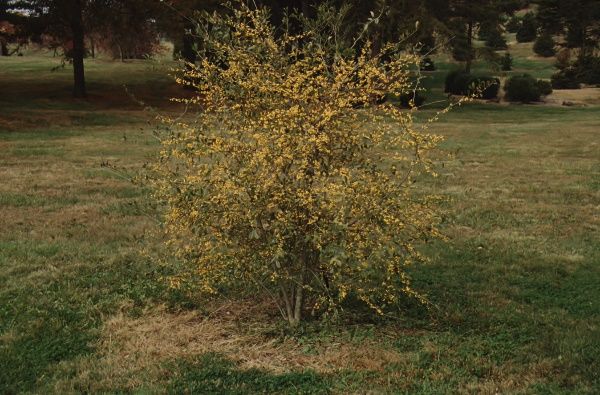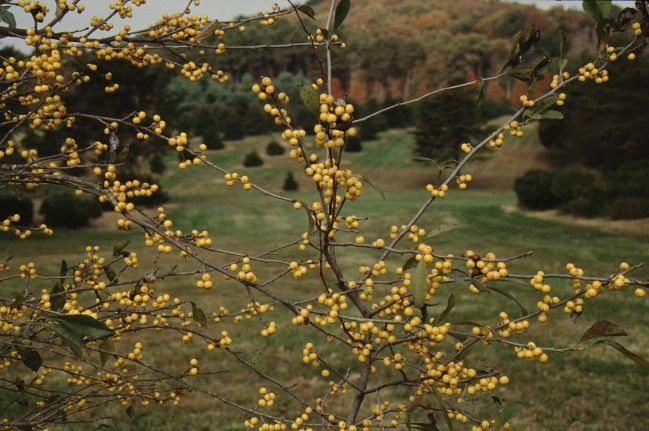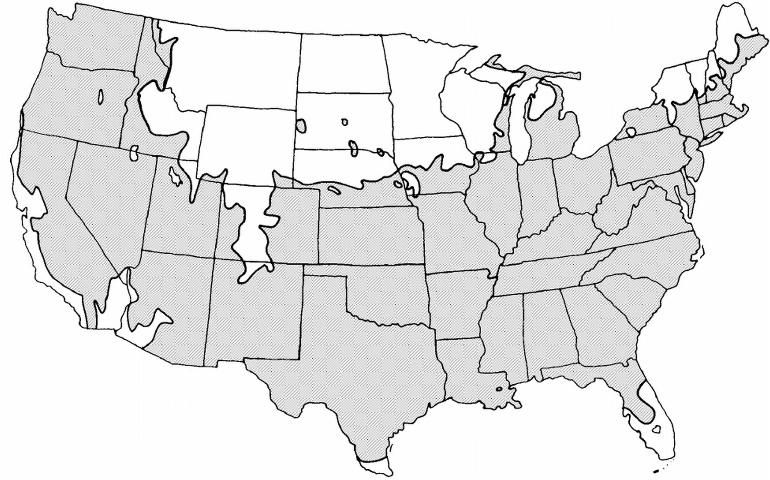Introduction
This native North American tree is often seen as a spreading 8 to 10foothigh shrub but can also become a 20 foot tall tree when planted in partial shade. Although the 2 to 3 inch long, dark green leaves are deciduous they do not present any appreciable fall color change. From March to May, small white flowers appear among the leaves. These blooms are followed by the production of small fruits which become orange/red when they ripen in early autumn. Since male trees will not fruit, be sure to purchase females so you will not miss the abundant fruit production. These fruits persist on the tree throughout the winter and are quite showy against the bare branches. After the fruits have been exposed to freezing and thawing, they become a favorite food source of many birds and mammals.

Credit: Edward F. Gilman, UF/IFAS

Credit: Edward F. Gilman, UF/IFAS
General Information
Scientific name: Ilex decidua 'Byers Golden'
Pronunciation: EYE-lecks dee-SID-yoo-uh
Common name(s): 'Byers Golden' possumhaw
Family: Aquifoliaceae
Plant type: shrub
USDA hardiness zones: 5 through 9A (Figure 3)
Planting month for zone 7: year round
Planting month for zone 8: year round
Planting month for zone 9: year round
Origin: native to North America
Invasive potential: not known to be invasive
Uses: container or above-ground planter; recommended for buffer strips around parking lots or for median strip plantings in the highway; near a deck or patio; specimen; residential street tree; wide tree lawns (>6 feet wide); medium-sized tree lawns (4–6 feet wide); narrow tree lawns (3–4 feet wide); sidewalk cutout (tree pit); small parking lot islands (< 100 square feet in size); medium-sized parking lot islands (100–200 square feet in size); large parking lot islands (> 200 square feet in size)
Availability: grown in small quantities by a small number of nurseries

Credit:
Description
Height: 12 to 18 feet
Spread: 8 to 12 feet
Plant habit: vase shape
Plant density: dense
Growth rate: slow
Texture: fine
Foliage
Leaf arrangement: alternate
Leaf type: simple
Leaf margin: serrulate
Leaf shape: obovate; elliptic (oval)
Leaf venation: pinnate
Leaf type and persistence: deciduous
Leaf blade length: 2 to 4 inches
Leaf color: green
Fall color: no fall color change
Fall characteristic: not showy
Flower
Flower color: white
Flower characteristic: spring flowering
Fruit
Fruit shape: round
Fruit length: less than 0.5 inch
Fruit cover: fleshy
Fruit color: yellow
Fruit characteristic: persists on the plant; showy
Trunk and Branches
Trunk/bark/branches: typically multi-trunked or clumping stems; not particularly showy; no thorns
Current year stem/twig color: gray/silver
Current year stem/twig thickness: thin
Culture
Light requirement: plant grows in part shade/part sun
Soil tolerances: loam; sand; acidic; slightly alkaline; extended flooding; well-drained
Drought tolerance: moderate
Other
Roots: usually not a problem
Winter interest: plant has winter interest due to unusual form, nice persistent fruits, showy winter trunk, or winter flowers
Outstanding plant: plant has outstanding ornamental features and could be planted more
Pest resistance: no serious pests are normally seen on the plant
Use and Management
These small trees grow with many thin, grey trunks or stems arising from the ground in a clumping fashion. There are so many of them and they are so thick that they can act as a screen. Lower branches are often removed to form a small tree with a tight head of foliage along the outer portion of the crown. Interior leaves are often shaded out and drop from the tree. If lower branches are not removed, the plant develops into a large, spreading mound of foliage. Often found along stream banks in the wild, possumhaw tolerates wet soil and can be used to stabilize stream banks. It can also be utilized as a large accent shrub or small tree planted in a lawn area as a specimen. Allow for plenty of room for this plant to spread since they look their best when they develop a symmetrical canopy.
Possumhaw should be grown in full sun or partial shade on acid or alkaline, well-drained, moist soil. They would make a good plant for water retention ponds and other areas which regularly accumulate water.
There are variety of cultivars developed for fruit color, fruit persistence and tree habit including: 'Byers Golden'—yellow fruit; 'Council Fire'—persistent orange-red fruit well into the winter; 'Sentry'—hardy only to zone 6, columnar habit makes it potentially suited for planting in highway medians. There are other cultivars.
Pests and Diseases
There do not appear to be many serious problems affecting this tree.